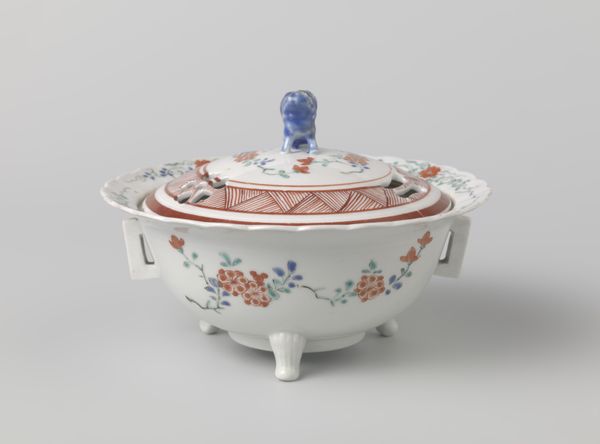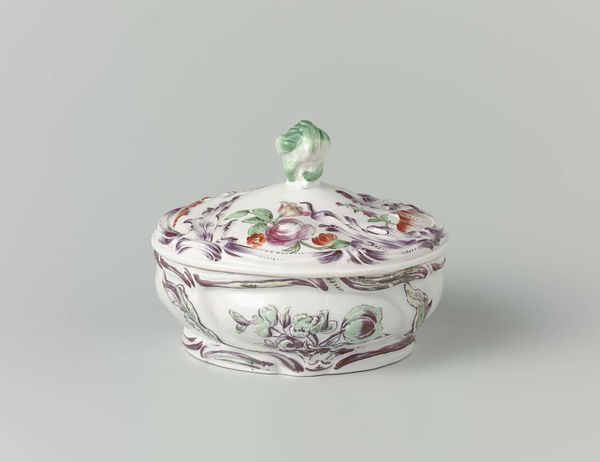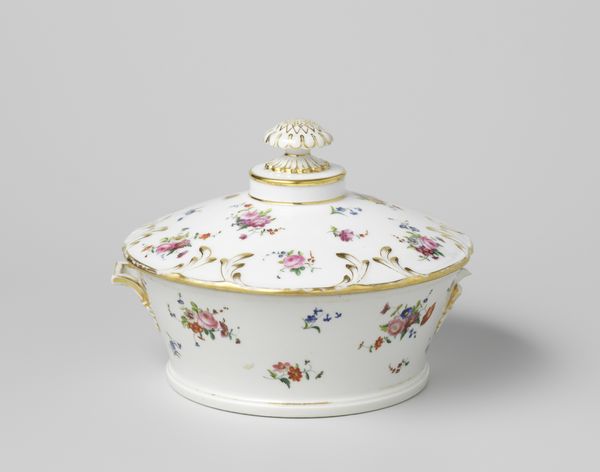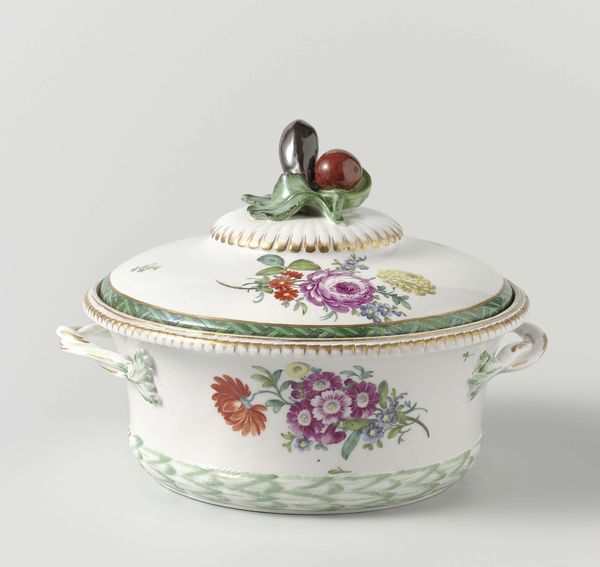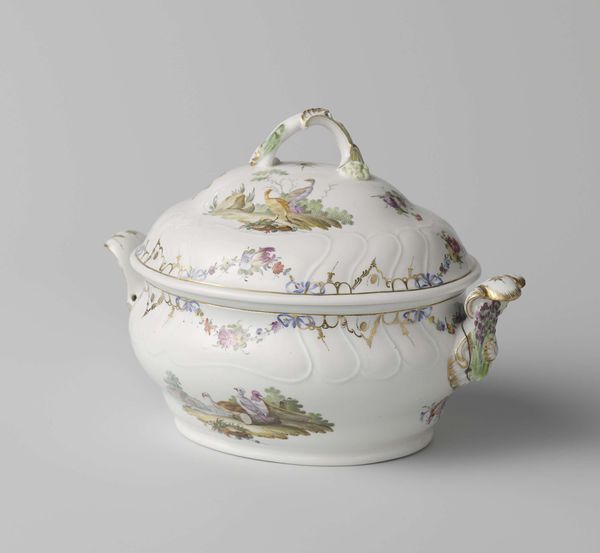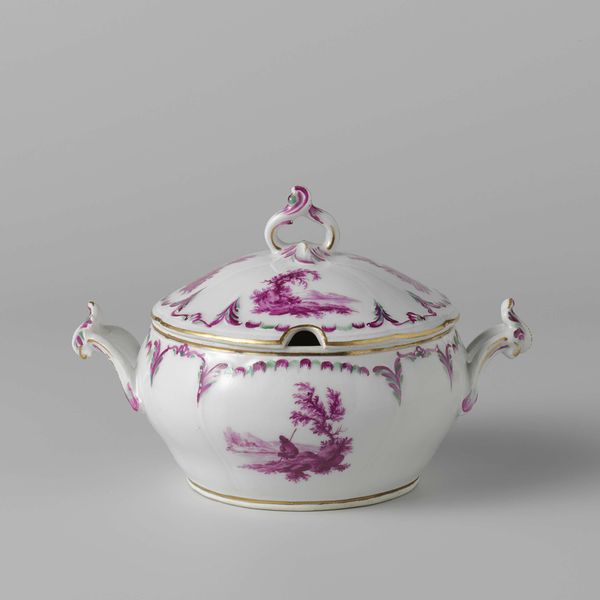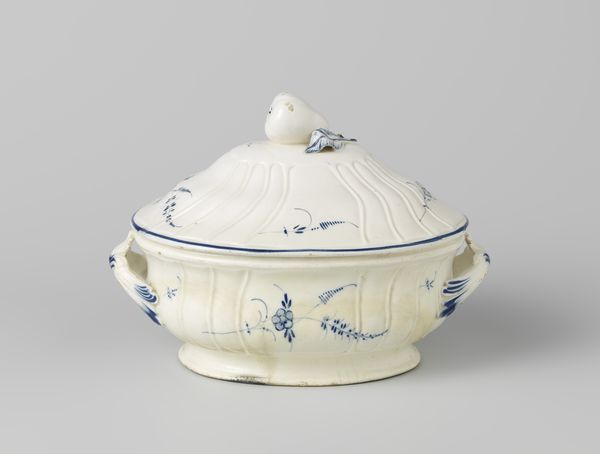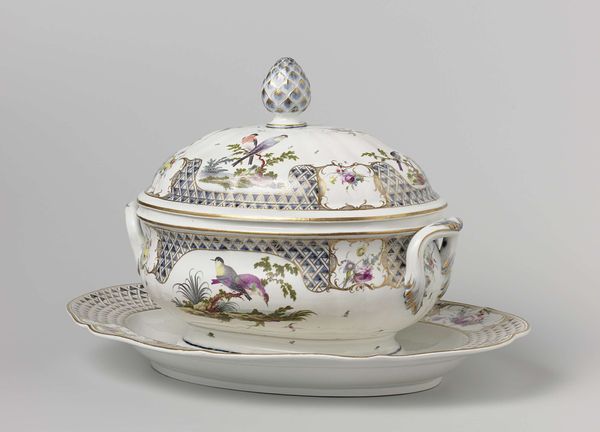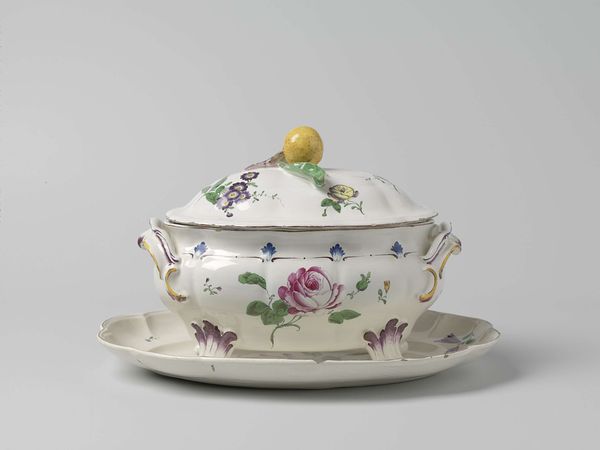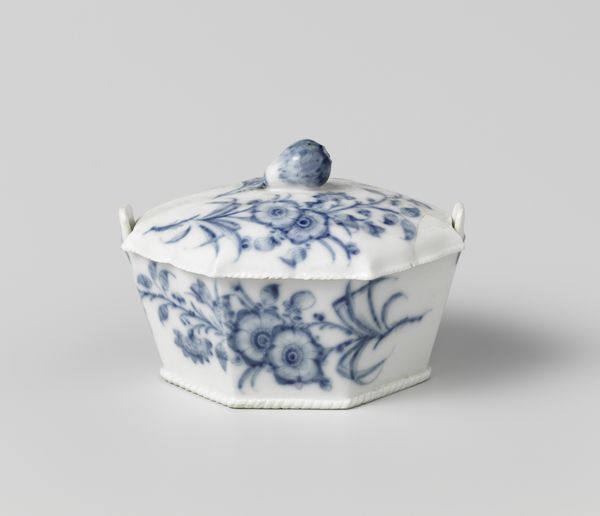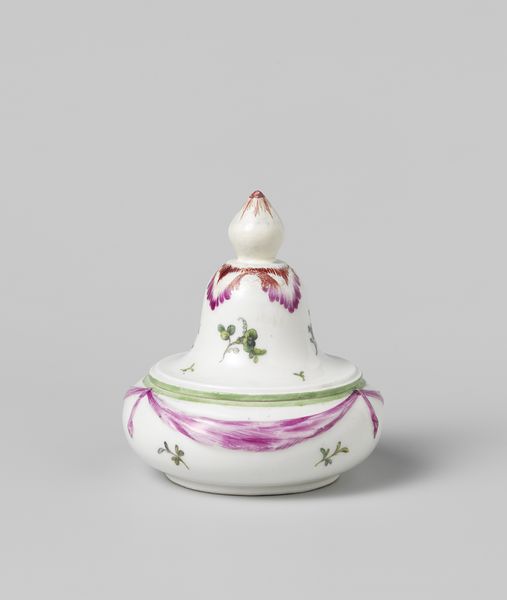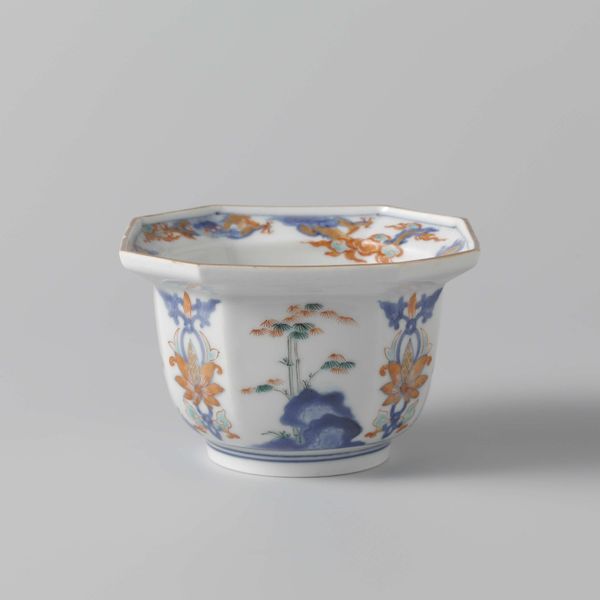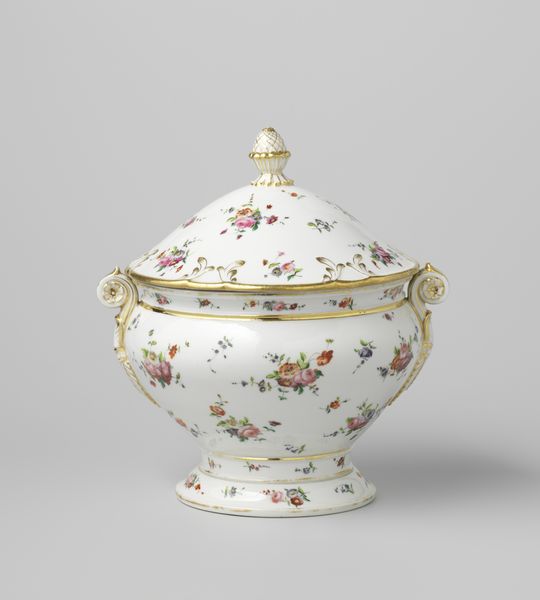
ceramic, porcelain
#
asian-art
#
ceramic
#
porcelain
#
stoneware
#
decorative-art
Dimensions: height 10.5 cm, height 6.5 cm, diameter 14.6 cm, diameter 5.3 cm, height 4.4 cm, diameter 11.6 cm
Copyright: Rijks Museum: Open Domain
Editor: Here we have an Incense Burner with a Cover and Flower Sprays, made around 1670-1690 by an anonymous artist. It's porcelain. It has a peaceful feel. What stands out to you about this piece? Curator: Its appeal resides not merely in its decorative function but also in its socio-economic implications. We see here the material expression of trade networks. Porcelain from Asia—especially China at the time, but likely made for export to the West, hence the floral design elements catered for European tastes— was a highly sought-after commodity. The creation of such an object signifies a specific labor system: the mining of materials, specialized craftspeople shaping and painting it, and merchants distributing it across continents. Consider, also, the intense heat of the kilns that were fueled to fire the porcelain. The very essence of this "peaceful feel" object has to be linked to extensive mining, manufacturing, and exchange networks that defined the 17th century. Does the cultural exchange make you question our own assumptions of artistic skill, class, and authorship? Editor: Yes, absolutely! It also makes me think about how different classes might interact with this kind of luxury item. Do you think the design and creation considered the future owner of this object? Curator: Undoubtably. These weren’t solely aesthetic exercises; they were commercial endeavors. Each brushstroke, each curve, was intended to attract buyers, and sustain workshops, fueling production of decorative luxury objects. Even this specific decorative floral pattern has links to different tastes that will guarantee better distribution of the incense burner in Western markets, where different trade opportunities take place. What impact can objects such as this one can have on challenging what we define as art? Editor: That's a really interesting perspective. I had initially focused on the aesthetic value, but thinking about the labor and trade behind it really reframes how I see this piece. Curator: Exactly! Appreciating an object necessitates an examination of the human relations embedded in its making and movement, because they shape and transform meaning of material production in broader societies. Editor: Thank you! I've definitely gained a new perspective on appreciating art with economic and labor lens.
Comments
No comments
Be the first to comment and join the conversation on the ultimate creative platform.
